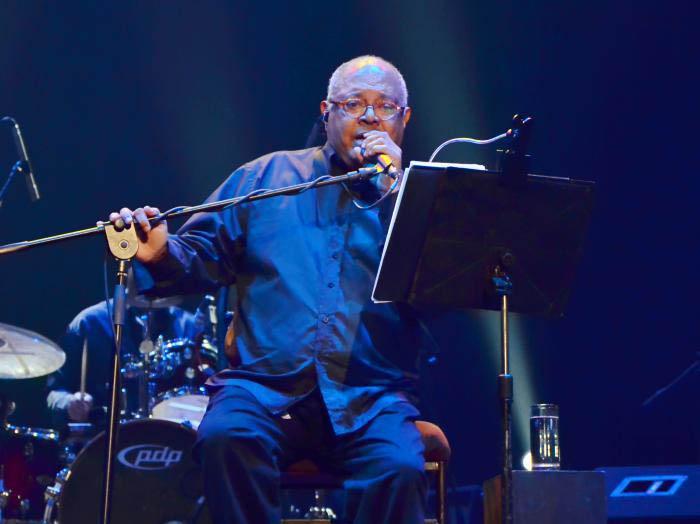
If anyone in our land and time embodied from head to toe, from before to after, from the root to the flight, the essence of the troubadour, it was Pablo Milanés. From the beginning, he was assisted by the genius of the ancient aedas and the venerable African griots; he erased the differences between the exclusivity of the Provençal troubadours and the popular sap of the minstrels; he drank from all times and from all sources, until he inhabited his time and became a source himself.
Filmmaker Manuel Octavio Gómez was certain of this when he filmed him amidst the dusty streets and scalded roofs of a colonial village; a troubadour at birth, a symbolic character in La primera carga al machete (The First Machete Charge).
But everything came from his background, from the serenades and guarachas that surrounded him when he was born in Bayamo on February 24, 1943 (the date is not just a coincidence), from the sounds of Havana to which he approached in the 1950s, of the coexistence and insertion in a night life in which the airs of the old traditional trova, the transition of the filin, the descarga a lo cubano, the ancestral rumbas and a healthy give and take with jazz and blues co-existed. He also had an ear for assimilating the foundations of Western music of the last centuries, hence his lineage was enriched with the heritage of Bach, Monteverdi and Pergolesi.
This is the profile of a Pablo Milanés who knew how to be a bridge man in the early 1960s, an open and proactive troubadour, a prodigy of the nights in which he appeared with the Cuarteto del Rey or in the descargas of Luis García and Maggie Prior, and author of compositions that would reveal, since then, how far his mood was, such as Y ya ves... and Mis 22 años.
Regarding the latter, his condition as a link between an old and a new form of trova has been insisted upon. Undoubtedly, Elena Burke’s rendition contributed to this perception. She would confess to her poet friends Sigfredo Ariel and Arístides Vega Chapú, many years later, that her favorite artist was Pablo Milanés.
However, if one reviews Pablo's production of those years it is possible to discover many other anticipations. That is to say, Pablo was unequivocally, as the poet Miguel Barnet has said on more than one occasion, a bridge man between all the trovas, the previous ones and those to come. And the troubadour himself and those who accompanied him in the fertile niche of Haydee's Casa de las Americas were aware of it; hence his belonging to the Nueva Trova, which has not been called, was a natural fact as his artistic closeness to Silvio, Noel, Vicente and the rest of the founders.
Undoubtedly, his stint in the Grupo de Experimentación Sonora del Icaic (GES) , directed by Leo Brouwer, from 1969 to 1976, further strengthened his expressive tools. It is significant that some of the members of the GES would constitute the core of the group that would accompany Pablo in the following years.
The internationalization of Pablo's work was not long in coming; many identified his work with the social and political processes taking place in Latin America and the Caribbean, and even in Spain at that time. Silvio and Pablo's concerts in Argentina, as soon as democracy was restored, are remembered as a memorable milestone in the continent's culture.
Poetry, social outreach and emancipatory spirit had long been part of the artist's creative impulse. It should not be forgotten the music he set to some verses by Félix Pita Rodríguez, in homage to the struggle of the Vietnamese people in 1967, and the sensitive way in which he took up the cardinal image of a poem by Miguel Barnet to sing of Che Guevara.
For many Cubans, Pablo is and will be inseparable from the epic dimension of pieces such as Canción por la unidad latinoamericana (Bolívar shot a star that shines next to Marti’s), Amo esta Isla, Yo me quedo, but also the memory of those and many other Cubans will be forever impregnated with the melodies and heartbreaking verses of Años, the unprejudiced ways of assuming love in El breve espacio en que no estás and El pecado original; and, finally, the ways of loving forever eternalized in Yolanda, Para vivir and Comienzo y final de una verde mañana.
Pablo is simply indispensable. Cubans who attended his last concert at the Ciudad Deportiva in 2022 knew that there was an atmosphere of farewell; and, at the same time, the certainty that his music would never be in vain. What he sang there and what he will continue to sing could be titled as the album he signed with Miguel Núñez, Flores del futuro. Because in the future, in our future, in our culture, in our conscience and sensitivity, Pablo will remain, the one of encounters above any disagreement, the one of the most emphatic and visceral Cuban identity. Say Pablo and you will have said troubadour.















